If you’ve seen a Super Bowl before, everything you think you hate about the event is probably true and hasn’t changed. It’s still comically over-produced, cloyingly garish, violent, insidious, rife with lousy grammar, brazenly hetero-normative, and more often than not, kind of a snoozer. None of this matters to the viewing public; for the last three years in a row, the Super Bowl has broken its own record as the most-watched TV show in history.
Whether actively experiencing the spectacle or not, there are a few reasons to like the Super Bowl in 2013, besides the fact that the Baltimore Ravens are the first major professional sports franchise, so far, to be named after a 19th century poem. For starters, in a sports year that’s already brought us doping cyclists and fake dead girlfriends, the teams in this year’s contest are welcome standouts. The San Francisco 49ers were the first NFL team to join the “It Gets Better” campaign, and their opponent, the Ravens, has a team captain who is the most outspoken advocate of LGBT rights in the NFL, and whose presence has evolved the once overtly homophobic locker-room culture of his entire team.
In addition, the stories of players Colin Kaepernick, Vernon Davis, Justin Smith, Joe Flacco, and Ray Lewis are more heartwarming, grotesque, impressive, and tragic than the game itself can ever be. I must leave many stories out, but there are other places where, for instance, you can read about how the opposing teams in this Super Bowl are coached by brothers Jim Harbaugh (49ers) and John Harbaugh (Ravens); do a Twitter search for #HarBowl and you’ll find many more. Also, Ravens tackle Michael Oher’s difficult and triumphant life journey has already been comprehensively detailed in Michael Lewis’s book “The Blind Side,” and in the film of the same name starring Sandra Bullock, so I’m not going there either. Instead, let’s start with the story of an NFL player who, should his team win the Super Bowl, wants to appear on Ellen and dance with her on set.
BRENDON AYANBADEJO – THE ACTIVIST
On August 29th, 2012, a 72-year old Baptist minister named Emmett Burns, Jr., a Democrat in the Maryland House of Delegates, was apparently upset after he learned that a Ravens player had donated two game tickets to a fundraiser for Marylanders for Marriage Equality. He wrote a letter to Baltimore Ravens owner Steve Bisciotti with the following statement:
“I find it inconceivable that one of your players, Mr. Brendon Ayanbadejo, would publicly endorse Same-Sex marriage, specifically as a Ravens football player … I am requesting that you take the necessary action, as a National Football League Owner, to inhibit such expressions from your employees and that he be ordered to cease and desist such injurious actions. I know of no other NFL player who has done what Mr. Ayanbadejo is doing.”
Emmett Burns, Jr. did not get his desired result. Other NFL players came to Ayanbadejo’s defense; three Oakland Raiders personally thanked Ayanbadejo for his stance following their next game. Minnesota Vikings punter Chris Kluwe memorably wrote Burns, “I can’t even begin to fathom the cognitive dissonance that must be coursing through your rapidly addled mind right now … I can assure you that gay people getting married will have zero effect on your life. They won’t come into your house and steal your children. They won’t magically turn you into a lustful cockmonster.”
For Kluwe, the cockmonster heard ‘round the world was his first step out on the timely issue (Minnesota, like Maryland, had a ballot measure related to same-sex marriage in November 2012) but for Brendon, the 36-year old special teams captain of the Baltimore Ravens and 11-year NFL veteran, this public kerfuffle was a long time coming.
In 2008, Brendon was frustrated that then-candidate Barack Obama did not openly support same-sex marriage, and in April 2009 expressed his opinions on the Huffington Post. This made Brendon one of the first pro athletes to openly express support for same-sex marriage. At that time in the Ravens locker room, marriage equality was somewhere between stoichiometry and cholera as an off-field interest. Players made crude remarks and asked him when he would reveal his homosexuality, Brendon told the New York Times. “If I was walking by, and they wanted to be immature and make comments, I’d keep walking. If they wanted to be real men and have conversations, I would have, but no one did.”
Brendon, who has a six-year old daughter and one-year old son with his longtime girlfriend, isn’t in it for himself, per se – he won’t be the first active gay NFL player. Born in Chicago to a Nigerian man and an Irish-American woman, he credits experiences from his difficult youth in fashioning the open-minded man he is today. As a small child living in a housing project, dependent on charities for Christmas gifts and Thanksgiving meals, Brendon tells the New York Times, “You were around every kind of person you could imagine … differences didn’t matter, because we all had struggles.”
When Brendon, his mother, and siblings moved to Santa Cruz, California, he also took to heart the acceptance his new friends had for “a biracial boy from a Chicago housing project,” and befriended openly gay students at his high school. By the time he was a football player at UCLA, he was quickly active in his new community, volunteering to teach theater at local high schools to help make up for cuts in arts funding.
On the field, Brendon doesn’t get a lot of face time, but he’s one of the best in the NFL at what he does, being voted to the Pro Bowl (the NFL’s all-star game) three times as a special teams player. As the Ravens’ special teams captain, he’s one of a scrum of players doing an unglamorous job protecting kickers and trying to tackle returners, but is good enough in the open field to earn occasional appearances at linebacker when the Ravens’ opponents are in obvious passing situations.
For now, Brendon doesn’t mind that he’s more famous for what he does off the field, and wants to use the media blitz surrounding the Super Bowl as an opportunity to continue the fight for same-sex marriage. “There [are] still 47 or so states that don’t have it passed,” he recently told The Baltimore Sun. “It needs to be passed federally. Why not be the person to carry that message not only to the United States but to the rest of the world? I have this huge platform. The whole world is watching. It’s a message of positivity. It’s a message of equality. And it’s a chance to get it out. It’s not going to affect the way I play football but it’s going to affect a lot of people’s lives off the field.”
COLIN KAEPERNICK – THE PHENOM
Opening the 2012 season, the San Francisco 49ers starting quarterback was a man named Alex Smith. Alex had led the team to the NFC Championship game last year, one game away from the Super Bowl. Through his first nine games this year, he was the best quarterback in the NFL at completing his passes; over 70% of his throws were caught. His win-loss percentage since 2011 was 76%. He had the third-highest quarterback rating in the NFL. He was like a bus that was clean and almost always on time and had a driver that looked like the boring version of someone who dumped you in college.
Then Alex got hurt; nothing major, he’d only miss a few weeks, and this is why NFL teams have backup quarterbacks. It just turns out that the 49ers backup, 25-year old Colin Kaepernick. is the fastest 6’4”, 230-lb man in probably any sport, and can throw like hell to boot, making him perhaps the most dangerous and unpredictable offensive force in the game. In so many words, the deliberate, steady bus was replaced by a flaming Apache helicopter flown by a nude Vladimir Putin. By the time Alex got healthy in November, the switch was official. The most accurate quarterback in the NFL hasn’t started a game since.
At the time, Alex Smith probably didn’t know that the young man who took his job is really more of a baseball player. Colin was drafted by the Cubs, offered numerous Division I scholarships in baseball, but only one in football, by the Nevada Wolfpack, who wanted him to play safety, not quarterback. By rights, Smith could argue, Colin shouldn’t even be here, but much of Colin’s journey—from being born to an unwed 19-year old mother to starting in the Super Bowl—is an unlikely one.
When he was six weeks old, Colin’s mother gave him up for adoption, and he joined the Wisconsin family of Rick and Teresa Kaepernick. The Kaepernicks had two children already, and having lost a pair of infant sons to congenital heart defects, badly wanted another child, and Colin, a mixed-race boy with an African-American father and a white mother, became the youngest and final Kaepernick child.
Colin grew up loving African-American music and culture (in middle school, he even got his hair braided like basketball star Allen Iverson) but was never curious about his biological parents. When he was a teenager, his mother told him everything she knew about his adoption and birth parents, but he wasn’t, and still isn’t, interested in meeting them. Since he’s become famous as the quarterback for the 49ers, his birth mother, Heidi Russo, 44, now of Thornton, Colorado, has come out of the ether and waged a public campaign to make her biological son’s acquaintance. Colin is not, as yet, willing to reciprocate. The Kaepernicks say they support any decision he makes.
On Sunday, February 3rd, heartbreaker Colin Kaepernick will make his tenth start in the NFL, making his path to the Super Bowl the third-fastest in history for a starting QB. Comparatively, he’s still not making much money from the sport. He’s still playing off of his rookie contract, and has no Super Bowl-related performance bonus, but as you may have heard on NPR or numerous other outlets, he’s already at work on a bit of merchandising. His habit of kissing his bicep after scoring a TD, which he calls “Kaepernicking,” has been trademarked in the same fashion as Tim “Tebowing” Tebow and Jeremy “Linsanity” Lin before him, figuring that if people are going to make products with that phrase, he should see the profits made in his name.
Colin also has a different plan for those profits. He wanted to give the proceeds for his “Kapernicking”-related merch sales to charity, and his first idea was to call his parents. Remembering how they lost two infant sons to congenital heart conditions, he asked them for help in finding a nonprofit associated with that medical issue, and they chose Camp Taylor, a camp for children afflicted with heart defects.
“What happened to the boys, it’s not something that we talked a lot about,” Rick Kaepernick told USA Today. “I think it’s his way of hurting with us, but also saying, ‘Let’s do something about this. Let’s help.’”
VERNON DAVIS – THE RENAISSANCE MAN
Brendon Ayanbadejo and Colin Kaepernick are notable off the field for their political activism and charitable work, respectively, but San Francisco 49ers tight end Vernon Davis is a different stripe of citizen-athlete altogether.
In a college sport where the student/athletes can have bullshit majors, infrequent attendance, mediocre graduation rates, and still be celebrated like heroes, a Division I football player who chooses an interesting major and works unusually hard at it during and after school is quite uncommon. On the spectrum of American probabilities, it’s somewhere between having a condom break during sex and having Meat Loaf’s autograph. A studio art major while at the University of Maryland—not “Art Appreciation,” mind you; this dude had to seriously paint—Vernon has taken his love for art with him to San Francisco.
He’s started a philanthropic organization called The Vernon Davis Foundation for the Arts, which provides grants to nonprofit programs and scholarships to dedicated art students. He has also teamed with the San Francisco Unified School District to create the Vernon Davis Visual Arts Scholarship, which goes yearly to a college-bound public high school student interested in a visual arts career. He’s even opened his own gallery, Gallery 85, on Santana Row in San Jose, California, making the gala opening a fundraiser for the Make-A-Wish Foundation and the San Jose youth nonprofit UnityCare.
In addition, Vernon’s an interior designer and co-founder of the firm Modern Class Design, with clients from the Bay Area to Miami, many of them fellow athletes. “I really enjoy looking at different rooms and putting ideas and designs together,” he told 49ers.com. “I love being creative and putting my touch on the houses.”
From what I’ve seen, a Vernon Davis-designed interior seems to prominently feature abstract paintings, which very well could be Vernon Davis originals. He still paints regularly year-round, and if you want to buy one of his pieces without having him rearrange your furniture, I just saw one on eBay for $600.
Still, not every teammate is spellbound by Vernon’s oeuvre. “Justin Smith teases me all the time, saying, ‘Man, that’s nothing,” Vernon says. “My son could do this!’”
JUSTIN SMITH – THE WOUNDED WARRIOR
On December 16th, 2012, 33-year old San Francisco 49ers defensive end Justin Smith tore his right triceps in a game against the New England Patriots.
“What surprises me is he actually got hurt,” Kirk Farmer, a teammate of Justin’s at Jefferson City High and at the University of Missouri, told the San Jose Mercury News. “I played with him and I was hurt all the time. He’s never been hurt — ever.” This is not hyperbole. When Justin missed the next game, a Dec. 23rd contest against the Seattle Seahawks, it was the first football game that Justin had missed, on any level.
The 49ers are clearly not as good without Justin in the lineup. The first time they played the Seahawks, with Justin, they won 13 – 6. Without Justin, they were humiliated 42 – 13, and Justin’s replacement in the lineup, a likeable gentleman named Ricky Jean-Francois, was repeatedly exploited by the Seahawks’ rushing attack. For the 49ers, the results of life with Justin’s backup uncovered a disorienting revelation. It was the football equivalent of finding out what song your parents had playing the moment you were conceived, and learning that the song was “What’s New Pussycat.”
What they witnessed against the Seahawks could not be unseen, but what in heaven’s name could be done? Rushing Justin back to the field was out of the question. Dr. David Chang, an independent orthopedic surgeon, predicted a recovery time of 12 weeks. ESPN injury expert Stephania Bell predicted that if he returned at all, he “isn’t going to be full strength again this season.” Evidently, Justin didn’t get the memo. He was playing again by January 12th and in every game since. It’s clear that for Justin, there’s simply no other way to live.
He’s known in the NFL as “Cowboy,” and not because he likes country music or calls every pair of shoes “shitkickers” or says things like “Cowboy Up!” when he’s in the cereal aisle. He grew up on a 1400-acre cattle farm in rural Missouri, spent his entire life doing the hard work of raising Hereford truebred cattle, and when he wasn’t lifting hay bales, he was in the gym, lifting weights. It’s where he met his wife, then a varsity long-distance runner, in college.
During his first year on the 49ers, Justin’s defensive line coach Jim Tomsula saw him spitting out tooth fragments after a collision with a teammate, and asked if he wanted treatment for the chipped teeth. “Nah,” Justin grunted. “Hell, I got a bunch of ’em.”
Partially torn triceps are a different realm than chipped teeth, however, and playing through this kind of injury can exact a dear tuition, payable in future surgeries, decades of painkillers, financial insolvency, and for the moment, having a known, exploitable bulls-eye on his right arm.
Former NFL fullback Lorenzo Neal, no stranger to injury in his own Pro Bowl career, spoke to a radio station about what Justin Smith should expect. “Guys are going to be hitting it, chopping it,” Neal said. “The triceps is mostly when you extend. He’ll have one arm to punch with, I think the other arm will be more to grab and wrap and tackle.”
“He’s going to be sore,” Neal adds. “And I know what he can do. They can put him on Toradol.” (Toradol is a potent non-steroidal anti-inflammatory) “Toradol, they inject in your butt. It’s a pain killer, it numbs the pain. You can play through it. Toradol, it’s candy. It was tea for me. I was taking Toradol like I was drinking coffee. You’re tight, you’re sore, and it relieves the pain for those three hours. We’ll see how Justin responds to it.”
We will see, indeed. Former player Akbar Gbaja-Biamila, writing for NFL.com, recalls, “One veteran player looked at me and said, ‘Take a shot of that and you won’t feel a thing when you play.’ I jumped in line, and that was the beginning of my Toradol dependency. After my first shot, I heard someone yell across the locker room, ‘Once you get on the T-train, you won’t get off.’”
The side effects are well known. Toradol rips up your stomach lining, and can cause vomiting, bloody stool, liver disease, and congestive heart failure. In addition, its pain-masking qualities make the player temporarily ignorant of further injuries endured while under the influence of the drug, with concussions and plantar fasciitis being among the most common collateral “side effects.” So, when the drug wears off, you may have a completely new injury, which can either mean surgery and the potential end of your career, or more drugs, and that’s not a choice that most players think over for too long.
Miami Herald writer Dan Le Batard wrote a recent story on former Miami Dolphins defensive end Jason Taylor, who was in so much pain, he couldn’t bend over to pick up his kids for almost two years and had to sleep standing up in a hallway. Taylor was so dependent on Toradol to play football, it numbed him to the compartment syndrome that developed in his calf; at one point, Taylor was three hours away from having his leg amputated.
Le Batard also mentions former NFL player Keith McCants, whose dependence on painkillers led to a post-football life of street drugs, and a suicide attempt, all in an attempt to stop the pain. The stories of Taylor and McCants puts the recent suicides of retired players Dave Duerson and Junior Seau, and that of active player Jovan Belcher, who also killed his girlfriend before killing himself, into chilling context. Their paths may have started, in part, with the injection that Justin took on January 12th.
“Players play, it is who we are,” Jason Taylor told Le Batard. “Would I do it all again? I would. If I had to sleep on the steps standing up for 15 years, I would do it.”
In 2011, a group of former players led by Joe Horn filed suit against the NFL, accusing the league and its teams of repeatedly administering the painkiller Toradol before and during games, despite the drug’s tendency to exacerbate high-risk injuries.
The NFL, for its part, has been actively trying to limit the use of the drug, and has begun requiring a waiver of liability for players who take it. The players’ union opposes this waiver, claiming that it’s a violation of the collective bargaining agreement, and in the meantime, the T-train keeps on rolling, with stops in all 32 locker rooms.
Justin’s been quiet on his injury, its treatment, and its effects. He told the New York Times, “I don’t want to get into how it feels, or this or that.”
“The parent in you worries about it,” Justin’s father, Dave Smith, told the San Jose Mercury News. “You don’t want him to do anything that will cause lasting damage. When he comes home to his wife and kids, he’s just Dad.”
JOE FLACCO – THE STOIC
The oldest of six kids in a tight Italian-American family from South Jersey, Joe Flacco seldom got in trouble while growing up. “He was very responsible,” his mother, Karen, tells Baltimore Magazine. “He was known as Father Joe.”
Despite being a starting quarterback, and having the attention that implies, Joe has always tried to keep a low profile. While at high school, he carpooled to school with buddies. In college, he rode his bike to class. As an NFL rookie, he showed up for training camp in his grandmother’s 1992 Cutlass Ciera. (He now drives a Ford F-150, so he’s wearing his success on his sleeve a bit more.)
“Unless you are in the locker room or you know me, it’s tough to get a read from me because I’m not a very outgoing person,” Joe says. “I’m not really vocal in the way a rah-rah kind of guy is.”
Joe Flacco, the quiet man with “the strongest arm in the NFL,” according to ESPN analyst Ron Jaworski, is still not a household name. Despite a strong career playoff record, including leading his team to the Super Bowl, he’s rarely mentioned among the “elite” quarterbacks, and his own team seems to be waiting to see how he performs on February 3rd before offering him a contract extension.
Then again, despite his physical gifts, Joe has never appeared to be elite. His high school team never had a winning record. His college team, the Delaware Blue Hens, didn’t even make him a captain (and quarterbacks are almost always captains). In the practices for the 2008 Senior Bowl, he showed all the talent in the world, but in his NFL career he has the tendency to completely disappear. With the exception of week 14 against the Redskins, Joe’s road record in 2012 was like seven incontinent toddlers in a bounce house.
“Flacco doesn’t rank in the top 10 in quarterback rating, completion percentage, touchdown passes or yards per completion,” Clifton Brown writes in The Sporting News. “That’s not elite. The Ravens have won 10 straight when [running back Ray] Rice runs for 100 yards or more. That’s still their best formula for success.”
But when Joe’s on, he could stand 500 feet downwind from a magazine stand and hit a photo of Kim Kardashian in the baby bump. He beat two of the best – Peyton Manning and Tom Brady – for the right to play football in February, and he beat them with his arm, throwing more TD passes than each of them, with no interceptions.
For their part, his teammates believe. “That’s why we’re going to the Super Bowl,” wide receiver Torrey Smith said to The Washington Post. “I’m sure there will be some people who won’t give him due unless we win it. But after the way he played in the second half [against New England], if that’s not elite, what is?”
“The question for Joe is about stepping up,” sportscaster Rich Gannon told USA Today. “With Ray Lewis retiring, Joe is going to have to step outside his comfort zone and be more demanding of teammates, play more of a demonstrative leadership role.”
This may be tough for Joe. “I think a tough guy doesn’t really show many emotions,” he says. “Not to say that I don’t have emotion, because that’s not true. But when things are going bad, as a leader, you can’t act like anything is wrong. You go out there and take each snap like it’s the same, no matter what the score is, no matter what happened on the last play. It’s just the way I was brought up.”
RAY LEWIS – THE SPECTACLE
No player has been more exhaustively written about in the run up to the Super Bowl than retiring 37-year old Baltimore Ravens middle linebacker Ray Lewis. He’ll likely be the most televised player in the whole shebang, from his pre-game Elaine Benes dance (seriously, if that’s not it, what is it?) to his post-game Michael Stipe act, where he peels off layer after layer of clothing to reveal various didactic t-shirts.
A former tight end for the Indianapolis Colts who I know has told me that he considered Ray Lewis among the most overrated defenders he ever faced; which is not to say that Ray is bad, just that his fine performance is not commensurate with the deafening noise around it. Over the past fifteen years, with the possible exception of the Chicago Bears’ Brian Urlacher, no NFL defensive player has been so hyped and so visible for so long, for all kinds of reasons.
Maybe you know that Ray was indicted for the murder of two men back in the year 2000 and was acquitted and testified against his buddies, who were also indicted, later settling out of court with the victims of the families when they sued him for damages. Grantland has a detailed breakdown of the trial; if you’re interested, start there.
After his acquittal, he immediately helped lead his team to the Super Bowl in 2001, so being a suspect in a yet-unsolved (and still unsolved) murder didn’t slow him down much. Ray has also since found Jesus in a serious way, fathered six kids with four different women, starred in some surreal Old Spice commercials, played video games on TV with Paul Rudd, and been a famously emotive linebacker for the same team his entire career.
Ray’s also done a ton of charity work, delivering much-needed medical supplies to Ethiopia, helping disadvantaged families in Baltimore through his Ray Lewis 52 Foundation, and even came to the aid of a 10-year old boy who was orphaned when his mother killed herself and his siblings. “I don’t want to come into his life for a phase,” Lewis said after spending a day with the boy. “I want to be in his life forever.”
Other people touched by Ray Lewis have reason to be less enthused by the prospect of his attention. The Baltimore Sun in 2000 detailed “allegations that Lewis hit or grabbed two former girlfriends, both pregnant, while he was in college at the University of Miami in 1994 and 1995” and reported “accusations to police by several women”—one of them pregnant—”in the Windsor Inn on Nov. 30 [1999] that Lewis hit them.” He’s also been taken to court a couple of times by different women for back payment of child support, despite his insistence that “he is determined not to repeat his childhood experience. He never had much of a relationship with his father…who would disappear from home for lengthy stretches.”
Even for a famous American football player, Ray is a complex man with a checkered past, and while he’s done his best to turn his life around with God’s word and good works, not everyone is a believer. Anna Burns Welker, wife of New England Patriots receiver Wes Welker, couldn’t stomach Ray’s showboating during the Ravens AFC Championship win over the Patriots and summarily tweeted:
“Proud of my husband and the Pats. By the way, if anyone is bored, please go to Ray Lewis’ Wikipedia page. 6 kids, 4 wives. Acquitted for murder. Paid a family off. Yay. What a hall of fame player! A true role model!”
You decide on Sunday whether to cheer for the player, the team, or both, should you be a Ravens fan. Still, even after Ray’s tears dry, be they of joy or sadness, you definitely haven’t seen the last of him; he’s already agreed to be a sportscaster for ESPN, ensuring that his effusive dogma and divisive histrionics will likely continue in public until he dies. As such, one of the most documented second acts in the life of an American athlete will linger, making the intervening time resemble something like forgiveness.
***
You can find “A Super Bowl Preview For People Who Don’t Know Football (2011 Edition)” here and “A Super Bowl Preview For People Who Don’t Know Football (2012 Edition)” here.


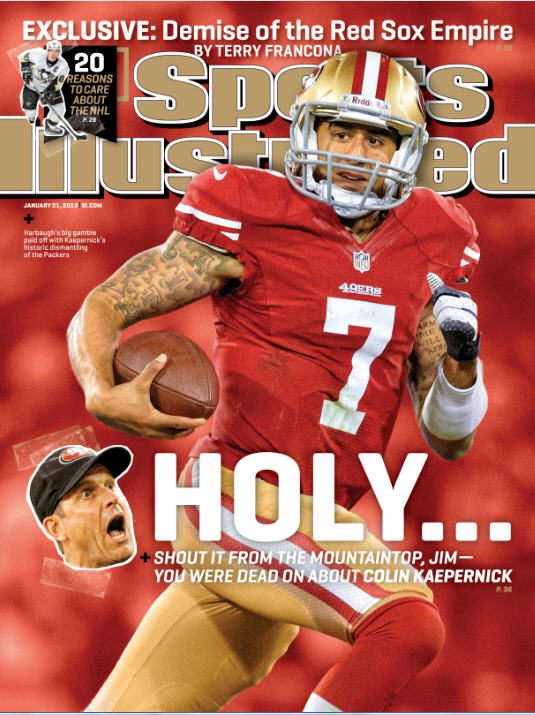
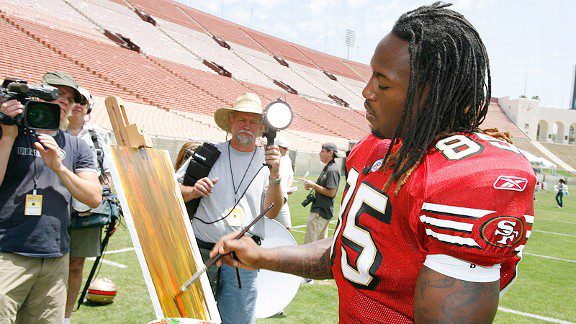
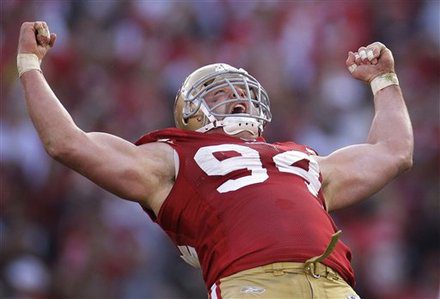
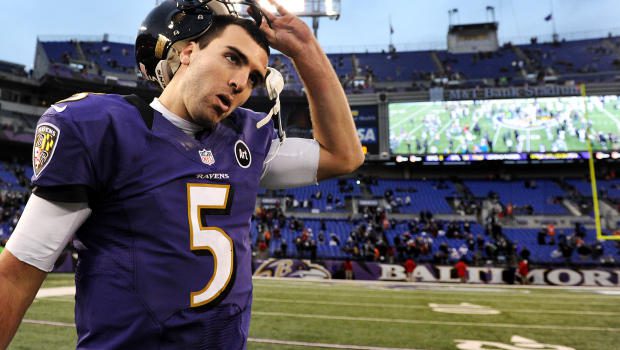
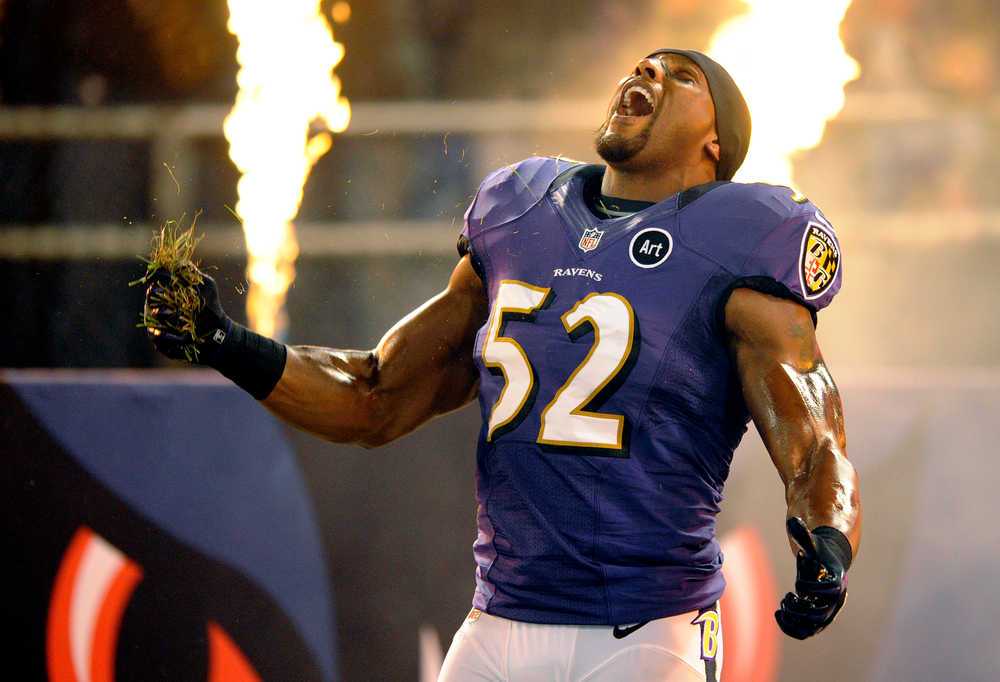




3 responses
>>”Colin’s journey—from being born to an unwed 19-year old mother to starting in the Super Bowl—is an unlikely one.”
Seems unlikely that this is anything but a commonplace, actually.
I;m not one for commenting, but “replaced by a flaming Apache helicopter flown by a nude Vladimir Putin” is one of the better lines I’ve read in a while. Really wonderful piece! And I don’t even like football.
The commercials Ray Lewis Starred in were actually for Old Spice. Though you are 100% correct in describing them as “surreal.”
Click here to subscribe today and leave your comment.